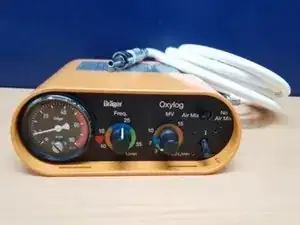Background Information
The Dräger OxyLog is a ventilation system that functions to aid the patient in reaching normal oxygenation. Dräger models include the OxyLog 1000, OxyLog 2000, OxyLog 2000 plus, OxyLog 3000, and the most recent OxyLog 3000 plus. The OxyLogs are best known for their transportability and dependability in emergency rescue situations and their use in emergency vehicles taking patients to hospitals. Patients treated with these machines must be infants who weigh more than 5 kg (11 lbs) and adults. These machines function by providing the patient with controlled, time-cycled ventilation that expels an average tidal volume of 50 mL. (This means the amount of oxygen that is given to the patient being treated).
Features and Capabilities
- In rare circumstances, the OxyLog can be used for spontaneous breathing in a toxic atmosphere with a spontaneous breathing attachment.
- Wide range of pressure and volume controlled ventilation modes.
- Synchronization with spontaneously breathing patients.
- Has optional automatic inspiratory flow mode.
- Uninterrupted displaying of numeric and curve data.
- BTPS and automatic altitude compensation.
- Simple but effective mounting systems for safe, hands-free operation.
- Powerful battery with up to 9.5 hours of independent operation.
- The ventilator has integrated audible and visual alarms that monitor both the airway pressure and supply pressure to aid in patient safety.
- Does not depend on any electrical power source.
- Can be used with Dräger Oxylog accessories: wall holder, carrying solutions, trolleys, and more.
Photo Differences in Generational Models:
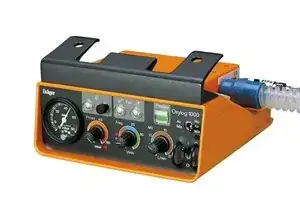
(Top Photo) Depicted is the OxyLog 1000. As it is the oldest model it does not have a screen and is operated with dials.
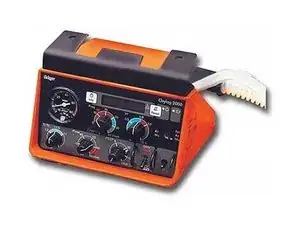
(Middle Photo) This model is the OxyLog 2000. It has a small screen and the tube port appears to connect in the back, unlike the side port on the OxyLog 1000.
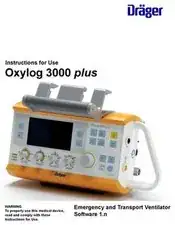
(Last Photo) The OxyLog 3000 plus is the most updated model. It can be identified by its white coloring and larger screen. It operates with buttons instead of dials like the older models. The size of this model is thinner and more lightweight compared to its predecessors.
Dräger OxyLog Overviews: OxyLog 1000 l OxyLog 2000 l OxyLog 3000
Specifications
*Disclaimer: These specifications are for the Service Manual provided in 1996. Newer models are modified and do not have these exact measurements.
Dimensions
Height: 80 mm (3.1 in)
Width: 200 mm (7.9 in)
Depth: 200 mm (7.9 in)
Weight
Weight: Approx. 2 kg (4.4 lbs)
Parts include:
- O2-compressed-air connecting hose, 1.5 m
- O2-compressed-air connecting hose, 3 m
- CS O2-compressed-air connecting hose, 3 m
- CS O2-compressed-air connecting hose, 5 m
- Ventilation valve
- Diaphragm
- Ventilation hose
- Masks
- Carrying strap
- Oxylog baseplate
- Oxylog case
- Oxylog back pack
Additional Information
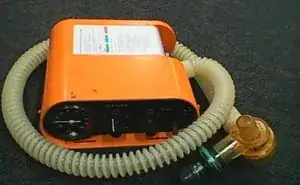
The ventilator does not use electricity and is mechanical. The oxygen bottle holds pressure that operates the ventilator.
Additionally, the outer shell is shockproof, making the ventilator robust and durable.
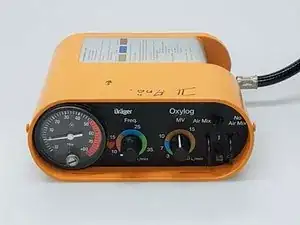
This makes it suitable for use at the scene of an emergency, in the ambulance, and while transporting the patient.
Ventilator Overview l Drager Home Page l OxyLog Models and Accessories
